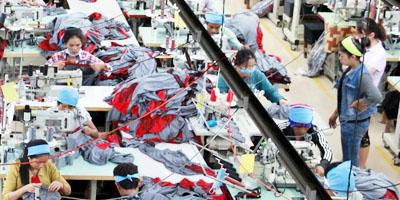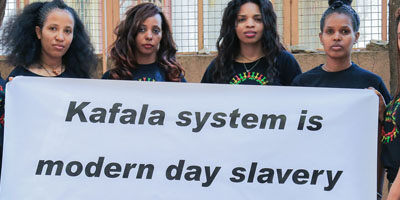Listen to the related podcast here
On a cold winter’s day or a slow afternoon, I often turn to tea for comfort or a pick-me-up. It wasn’t until I recently read that after water, tea is the most consumed beverage globally, that I wanted to learn more about the tea industry. What are the working conditions and wages like in tea factories? Whose hands worked for hours on end plucking each leaf? What steps were involved from seed to my cup?
I began my inquiry with a conversation with Katie Cyr, a certified tea sommelier– yes, like wine but for tea – and founder of Monarch Tea Company in Ontario. When I asked her why she became interested in the world of tea, she told me about how, as a child, she would spend afternoons with her grandmother having conversations over cups of freshly brewed Irish Breakfast tea. Cyr said that she believes tea has the power to break down boundaries and bring people together.

“Every part of the world has a connection with tea,” she said. “Either it’s a tea growing region or, if not, there’s often tea involved in the custom of getting together with friends or family. So, I just love that no matter where someone is from, there’s often a special story behind tea that they’ll connect with.”
Tea’s shady past (and present)
The history of tea goes back 5,000 years to when Chinese people first sipped the water of steeped leaves. But tea production’s past as a colonial crop grown in British colonies is how its dubious business practices emerge. Although colonial states such as India and Sri Lanka have long been independent of England, the colonial structure that was imposed upon the tea plantations still very much exists today.
I had the opportunity to speak with Sabita Banerji, founder, and CEO of THIRST -The International Roundtable for Sustainable Tea, an organization based in the UK, about this colonial background and its effects. Banerji grew up in India, and later moved to the UK where she has pursued a career in ethical trade and international development. She created THIRST in 2018 with the hope of creating a fairer and more resilient tea sector. In our conversation, she helped me to understand more about the colonial history of tea.

“Where tea plantations do still exist, there’s a very distinct difference between the manager and the workers. It’s not a very equal society,” she said. “Tea plantations can be like little countries on their own. The manager or the company owner rules the country, over all the people in it, the workers and their families, which is obviously not ideal, but also it places a huge responsibility on the company.” Banerji also told me that in countries like India for they are legally required to provide for workers and their families, not only with housing but also with education and healthcare.
According to a report from the Business and Human Rights Resource Center, thirteen million workers on tea plantations suffer severe human rights abuses from their employers. To address this problem, The group contacted 65 major tea companies and requested that they disclose their supply chain details in order to create the first ever Tea Transparency Tracker. Only a minority agreed to fully disclose their supply chain information.
When I became aware of just how widely tea is consumed, I was shocked at the lack of social responsibility of the majority of these large tea corporations. Through my research I came to realize an unfortunate truth behind the drink many of us have come to take great comfort in.
Ethical concerns in the tea industry today
After having read some of the history of tea growing, I wanted to find out more about the most prominent issues facing workers in the tea industry today. Banerji told me that small-scale tea farmers are among the most negatively impacted in the industry, even more so than workers on larger tea plantations. She said that the overarching issue here is that tea as a product has become extremely devalued over time while production remains high, and with the significant decrease in prices, there isn’t enough profit being made for the tea workers to be treated fairly. “People essentially aren’t paying enough for tea anymore” she said, “Tea as a product has become massively devalued, while the producers still have the responsibility to look after all their workers.”
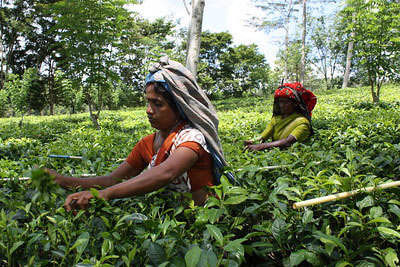
I also had the chance to speak with Kevin Gascoyne who has been in the tea industry for over thirty years. He is a co-owner and tea buyer for a small-scale tea company, Camellia Sinensis, which prides itself on sourcing some of the most high-end tea on the market. Echoing Banerji’s perspective, Gascoyne told me that many very large tea corporations often buy tea at below the price that it costs to produce. This means that there is very little profit that can then later go back to the growers and harvesters.
Incredibly low wages and poor housing conditions are common, and Banerji said that while it may be a good thing that many tea plantations are required to provide education and housing to their workers, there usually isn’t enough money to ensure that these are good housing conditions, let alone for fair wages on top of the accommodations. Tea workers can essentially get stuck in a lifestyle where they are working incredibly long hours with very little pay, but stay on the tea plantation because they don’t have the means to find better housing or education for their children. Additionally, since the tea plantation system was historically based on slavery and colonialism, there is a significant amount of hierarchy and the tea “pluckers” who gather the leaves generally don’t have any power to negotiate their wages.
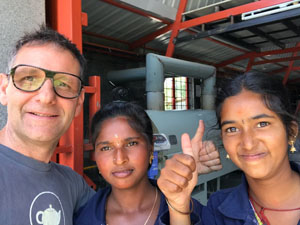
In our conversation, Gascoyne elaborated on the complexities of giving money back to the tea growers and harvesters. In cases like Camelia Sinensis, he told me that the company truly wants to do business fairly, but it’s very hard to reintroduce money into the system in a way that works for everyone involved. For example, he said,“I know a tea garden where they decided to increase wages, but then the pluckers, who had worked five days a week, started coming in four days a week because they now had enough money to get buy on less hours. But then the harvest suffered.”
He then told me about these tea growers taking an alternative approach. Money was used to build a school and give free education to all of the children on the tea plantation instead of the workers having to pay for it. However, Gascoyne said this too brought problems. “When this happened, parents stopped supervising their children’s homework, they stopped making sure their kids were going to school, and truancy went up. So now there’s a problem with none of the kids going to school because the parents thought someone else was taking care of it.”
Gascoyne said that these examples demonstrate how in order for the chain to be healthy, you can’t just take money from one end and drop it at the other without considering the implications this may have.
Gender inequality in the tea industry
I also discovered that there is a lot of gender inequality in the tea industry. When I asked Banerji about this, she said, “There’s a strong gender imbalance in the tea sector, in the sense that women are concentrated at the lowest paid roles. So, it’s generally women who are the tea pluckers and that’s the role that has the least pay. Women also tend not to be very well represented in some trade unions. So, it’s very hard for them to get out of that situation. Plus, they have all their unpaid domestic care work.”
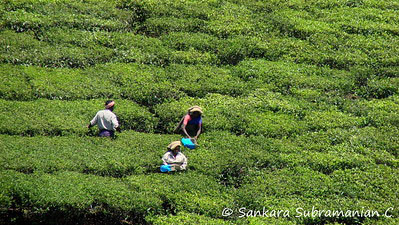
Banerji also noted that it is important to remember that while these workers on the first level of tea supply chains face the most serious challenges, there are issues at each level of the value chain that end up ultimately worsening the challenges for the workers plucking tea.
Efforts of reform
While there are clearly a lot of issues within the tea industry, there is also a lot being done to help. THIRST is currently working on a human rights impact assessment of the tea sector. THIRST’s goal is to create systemic change within the industry for workers and farmers who are still being subject to regulations imposed in the 19th century. The impact assessment will consist of three stages in three years. Stage one has already taken place and consisted of a literature review outlining evidence that ethical issues within tea production truly is a global issue. Phase two will consist of surveying tea producers and inquiring about what is stopping them from being able to pay living wages and give their workers important resources like housing. Finally, the third phase will be to hold roundtable discussions to come up with action plans to help resolve some of these complex issues.
Many tea companies also are working to combat some of these systemic issues. Gascoyne discussed steps his company has taken. He said that since Camellia Sinensis has very few intermediaries to pay and the tea comes almost directly from the producers, money can return to the tea harvesters themselves. He said that Camelia Sinensis also pays a high price for tea at the source, buying from small-scale farmers who produce very high-end tea.
In 2018 the company created a Tea Studio in the Nilgiris region of India to promote the production of “tailor made” whole leaf teas using sustainable practices. Gascoyne said that one of the biggest positive outcomes that he has seen from the creation of the Tea Studio isn’t just the high-quality of tea being produced, but also the pride and dignity it has brought to the workers. “They’re proud of what they’re doing, and that’s a pride that they didn’t have in their work before. It’s a new thing. Suddenly, they’ve become like an artisan of their trade.” He said that now these tea workers have a real connection to the product. “I didn’t expect it. I hadn’t really thought of this element before, but to see people, suddenly feeling that they’re a relevant part of a big picture is something really quite beautiful. I don’t see that in the tea industry very much and I’ve worked as a buyer for thirty years. So that, I think, is the real cherry on the top of having put this project together.”
What can the consumer do to help?
After learning about the human rights issues plaguing the tea industry and what some companies and organizations are doing to make a difference, I wanted to know what we, as tea drinkers, can do to help.
Banerji’s says to look for fair trade certified tea. Although some people in the tea field have said that organizations like the Ethical Tea Partnership and the Rainforest Alliance may be greenwashing without necessarily having the tea pluckers’ best interests in mind, they are at a minimum bringing awareness to the issues in the industry. Buying tea with these certifications could be a good place to start for the socially conscious consumer.
I also asked Gascoyne’s view on the matter, and he said that buying higher-priced tea is best when it comes to promoting the ethical treatment of tea workers because buying cheaper tea, and tea that has been marked down in the supermarket, ultimately has an echo all the way down the chain to a cheaper price paid at the source. “Generally speaking, the small companies, who have a bigger heart for the product, tend to be the ones that have more passion for where it comes from and more respect for the growers.”


